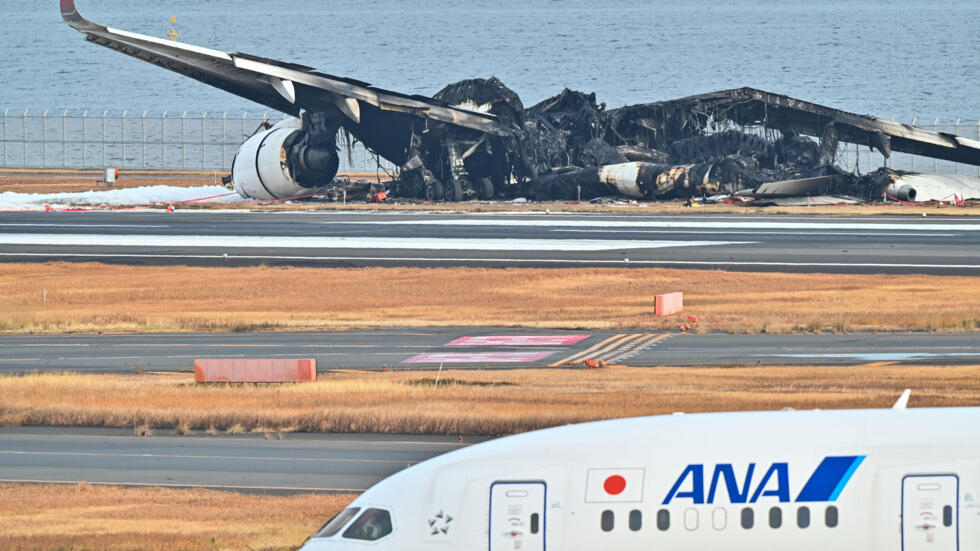In a shocking turn of events at Tokyo Haneda Airport, the pilots of a Japanese airliner were initially oblivious to the fact that their jet Plane was engulfed in flames after colliding with a smaller plane. It was only when a quick-thinking flight attendant alerted them to the cabin fire that the crew sprang into action, initiating a life-saving evacuation for all 379 passengers on board Japan Airlines Flight 516.
Tragically, the smaller coastguard plane, identified as a Bombardier Dash-8, suffered a devastating fate, with five of the six occupants losing their lives in the collision.
The spokesperson for Japan Airlines revealed, “Right after the plane touched down, the pilot felt a sudden shock, and lost control of staying on the runway. A fire took place, but the pilots didn’t recognize it initially and learned about it through the cabin attendant.”
Despite the damaged announcement system, the crew, composed of three pilots and 12 flight attendants, demonstrated remarkable composure. Using megaphones and their voices, they guided passengers through the emergency evacuation process.
“The first thing cabin attendants did [after they realised there were] passengers who recognised that their plane was on fire, was to make them stay calm and not stand up, which could make the escape difficult. The announcement system was unusable, so I made these instructions without it,” the JAL spokesperson explained.
Described by Japanese media as a “miraculous 18 minutes,” passengers left their belongings behind, swiftly moving to emergency exits and sliding out of the aircraft just before it became engulfed in flames.
As smoke filled the cabin, cabin attendants shouted crucial instructions, urging passengers to leave their belongings, remove high heels, and lower their heads for a swift and safe escape. The spokesperson emphasized that the passengers’ cooperation was the key to the successful evacuation.
Investigations revealed that it did not clear the coastguard plane for take-off on Haneda’s runway, as they had already cleared the JAL flight to land on runway 34R. I instructed the coastguard aircraft to “taxi to holding point C5,” a location on the airfield’s taxiway system where aircraft await permission to enter the active runway for take-off.
The transcript highlighted that the coastguard aircraft acknowledged the call from air traffic to taxi to the holding point, marking its last transmission before the tragic collision. This incident underscores the importance of robust communication protocols and the critical role they play in preventing such catastrophic events.
